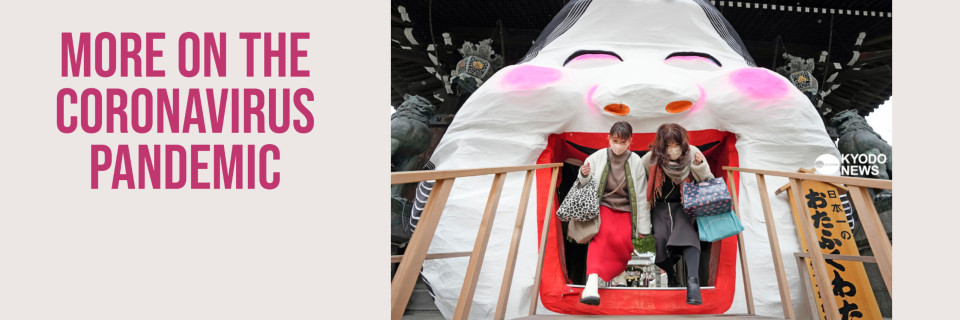Japan's easing of coronavirus guidelines on mask-wearing had little apparent effect on Monday, with many people keeping their faces covered despite government efforts to normalize aspects of daily life that were subject to public health restrictions during the pandemic.
Even though the government no longer recommends mask-wearing in most cases under the relaxed rules, morning commuters in Tokyo and people at stations and other gathering places were appearing to take a wait-and-see approach.


Among them was 29-year-old Shiori Ogino, who said on the way to her office she would be staying masked because the "risk of coronavirus infection and the rules on distancing are unchanged."
She said she wants to wait until the government downgrades the legal status of the coronavirus as an infectious disease in May as planned.
The mask-wearing guidelines were eased ahead of the downgrading of the legal status of COVID-19 to the same category as common infectious diseases on May 8. COVID-19 is currently designated as a special category equivalent to or stricter than Class 2, which covers infectious diseases, such as tuberculosis and severe acute respiratory syndrome or SARS.
On a shinkansen bullet train platform at Tokyo Station on Monday morning, however, most businesspeople and travelers remained masked. Kiyoshi Watanabe, a 76-year-old headed on a trip to Kyoto Prefecture, said he was "still keeping an eye on how it goes."
"I hope I might be able to start taking it off by about the end of springtime," he said.
Although mask-wearing has never been legally mandated in Japan, the government had recommended wearing masks indoors while not suggesting doing so outdoors. But most of the Japanese public wore them regardless of whether they were indoors or outdoors.
Under the new guidelines, the government still recommends mask-wearing in medical institutions, nursing homes and on crowded public transportation. It also notes that masks protect people at higher risk of serious illness, including the elderly.
Airlines, railways, buses and other public transportation will no longer ask travelers to wear one, and the same goes for operators of major supermarket chains and convenience stores.
One commuter that went without a mask was Prime Minister Fumio Kishida. The Japanese leader, his security and secretarial staff all made the short walk from the leader's residence to his office with faces uncovered.
Speaking to reporters, he said he "will be taking my mask off in more instances from now on," while also asking people to wear a mask when meeting people at high risk of infection, such as the elderly in care facilities.
At Tokyo Disneyland, which is from Monday no longer requiring visitors or staff to wear masks, almost everyone headed for the ticket gates was covered up.
But a 30-year-old woman visiting with her family from Saga Prefecture, southwestern Japan, bucked the trend.
"We've come all the way to Disneyland, and the best thing is if we can all see each other's expressions today," she said.
Schools will also, in principle, no longer request mask-wearing from April 1, the start of the Japanese academic year.
However, for barbers, beauty salons and other services in which there is close contact, customers will still likely be asked to wear masks in most cases.
At music performances and concerts, attendees will be asked to follow the organizers' policies.












